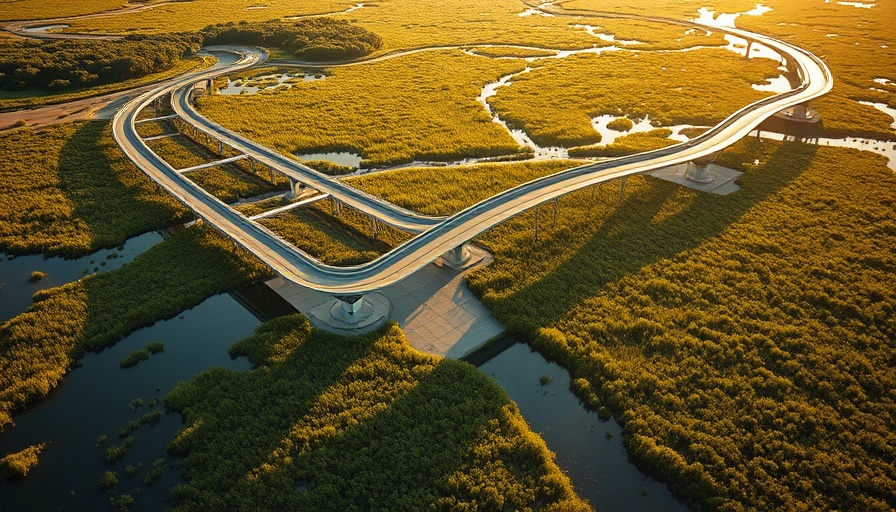
The Fareja Bridge: A Beautiful Nexus of History and Innovation
Rómulo Neto Arquitetos embarked on a compelling project to construct a pedestrian and cycling crossing over the historic Fareja Bridge in Vagos, Aveiro, Portugal. This new structure will serve as a “museum bridge,” linking the present to the past while ensuring that the historic remnants of the old bridge, built in 1855, are honored even as they decay over time.
A Blend of Old and New: The Design Philosophy
The design approach centers around crafting a bridge that not only facilitates movement but also enhances the visual experience of its surroundings. With its curve and counter-curve forms, the new bridge encourages users to engage with the old ruins of the Fareja Bridge. As users traverse the structure, they will enjoy uninterrupted views of the historical site, effectively treating it as a living exhibit.
Environment and Aesthetic Considerations
Using materials like corten steel and wood, the architects chose aesthetics that blend with the natural landscape. The organic shape minimizes visual disruption, ensuring the new bridge harmonizes with the environment, even as the ruin may one day be no more. This thoughtful integration invites community members to experience the landscape in a fresh way, while remaining respectful of history.
Budget-Friendly Solutions for Sustainable Design
The project also highlights a crucial aspect of contemporary architecture: economic sustainability. With a budget capped at €180,000 + VAT, solutions had to be both functional and economical. The design team focused on innovative construction methods and materials that provide longevity without neglecting style.
Final Reflections on the Fareja Bridge Project
When considering the Fareja Bridge, it’s evident that thoughtful architecture can transcend mere functionality. This project symbolizes a commitment to preserving cultural heritage while fostering a more interconnected community. As cities continue to grow, it is designs like these that remind us of the past while paving the way for future exploration and interaction.
 Add Row
Add Row  Add
Add 

 Add Row
Add Row  Add Element
Add Element 






Write A Comment